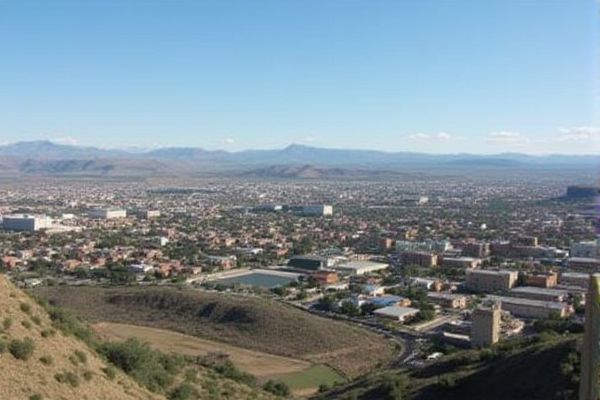
Internet and telecommunications options in Utah: Major ISPs: CenturyLink, Xfinity, Google Fiber. Fiber-optic availability in urban areas. High-speed broadband in rural locations possible. Satellite providers like Viasat and HughesNet operational. 5G coverage expanding in metropolitan regions. DSL services available through older infrastructure. Utah Broadband for wireless internet options. Telecommunications taxes and fees vary by provider. Competitive VoIP plans for affordable communications. Internet subsidy programs for low-income households.
Major ISPs: CenturyLink, Xfinity, Google Fiber.
In Utah, major Internet Service Providers include Xfinity, which offers broad availability and impressive speeds with cable plans up to 2,000 Mbps; CenturyLink, providing widespread coverage including DSL and gigabit fiber in select areas; and Google Fiber, delivering speeds up to 8,000 Mbps but with limited availability, mostly in Salt Lake City. Xfinity is often preferred for its wide coverage and diverse plans, while CenturyLink's fiber options and rural reach are notable, and Google Fiber stands out for its high-speed plans where available.
Fiber-optic availability in urban areas.
Utopia Fiber, an open-access fiber-optic network, was founded by 11 Utah cities in 2004 and has since expanded to serve 20 cities across Utah. This includes urban areas such as Layton, Orem, and West Valley City. Known for its high-speed internet services, the network offers impressive speeds reaching up to 10 Gbps with a remarkable 99.99% uptime. To learn more about their offerings and network structure, visit the Utopia Fiber website for detailed information.
High-speed broadband in rural locations possible.
In Utah, high-speed broadband in rural locations is being expanded through state initiatives, such as the project in Box Elder County, which will bring broadband internet to over 3,000 people using nearly $11 million in funding, including money from the American Rescue Plan. Additionally, efforts like the Croydon Broadband Project are implementing fiber-to-the-premises technology to deliver up to one-gigabit symmetrical internet speeds to rural communities. To learn more about these developments, visit the Utah Public Radio website for detailed coverage.
Satellite providers like Viasat and HughesNet operational.
Viasat and HughesNet are the primary Satellite Internet providers in Utah, offering high-speed internet services to rural and remote areas. Viasat provides download speeds up to 150 Mbps in some areas, with data allowances of up to 850 GB, while HughesNet offers consistent speeds of up to 100 Mbps with data allowances ranging from 100 GB to 200 GB.
5G coverage expanding in metropolitan regions.
5G coverage in Utah is rapidly expanding, especially in metropolitan regions, with T-Mobile leading the efforts by covering a substantial 44.88% of the state. This growth is followed by AT&T, which covers 30.72%, and Verizon, which holds 14.5% of the market share, predominantly in urban areas such as Salt Lake City and Provo. For more detailed information, check the insights provided by Best Coverage in Utah to explore the dynamics of 5G networks and their coverage across different regions. These statistics highlight the competitive nature of telecommunication companies working hard to provide reliable service to the residents of Utah.
DSL services available through older infrastructure.
DSL services in Utah encounter significant challenges primarily due to the aging infrastructure of copper phone lines, which are susceptible to corrosion and deterioration. This often leads to frequent service outages and poor customer service. Despite the fact that nearly 90% of Americans have access to at least one DSL provider, the lack of competition in regional areas results in limited choices for customers. For more detailed information on DSL services and providers, visit HighSpeedInternet.
Utah Broadband for wireless internet options.
Utah Broadband offers wireless internet options through its fixed wireless service, which involves installing a small antenna at the customer's premise to connect to one of their main towers, providing speeds up to 1 Gbps with no data caps, fast installation times, and reliable network connectivity. The service is compatible with various internet applications and includes benefits like immediate troubleshooting and customized bandwidth solutions. For more details, visit their website at Utah Broadband.
Telecommunications taxes and fees vary by provider.
In Utah, telecommunications taxes and fees vary by jurisdiction and include the E-911 Telephone Fee, a unified statewide E-911 fee, a radio network charge, and a Municipal Telecommunications License Tax (MTLT) that can be up to 3.5% and is imposed by cities and towns. These fees must be reported and remitted based on the customer's ZIP+4 service address, and providers can use a downloadable database from the Utah Tax Commission to determine the correct taxing jurisdictions.
Competitive VoIP plans for affordable communications.
Competitive VoIP plans in Utah offer significant cost savings, with rates often less than $20 per line, reducing phone bills by up to 60% and international call costs by up to 90%. These plans include features like call forwarding, voicemail, and video conferencing, making them a budget-friendly and feature-rich alternative to traditional phone systems. For a deeper understanding of these modern communication solutions, visit the Nextiva Blog.
Internet subsidy programs for low-income households.
The Affordable Connectivity Program (ACP), though ended as of June 1, 2024, previously offered eligible low-income households in Utah a discount of up to $30 per month for internet services, up to $75 per month for those on Tribal lands, and a one-time discount of up to $100 for a laptop, desktop, or tablet. Households can now explore alternative programs like the Lifeline Program, which offers a discount of up to $9.25 per month for phone, internet, or bundled services.
